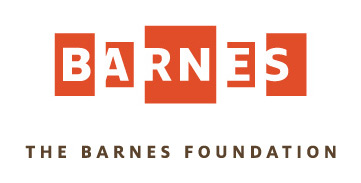By the time visitors to the Barnes Foundation reached the third or fourth gallery of priceless art, they seemed to have grown weary of the audio headset that guided them through the collection. They took one earpiece off, then both. They started chatting with their companions. Most importantly, an evaluation showed, they stayed in the galleries far less time than people who didn’t have the audio headset: 88 minutes versus 107 minutes.
“It seemed as if the tool we had given users – the audio guide – actually flooded them,” said the Barnes’ Shelley Bernstein, Director of Audience Engagement and Chief Experience Officer. “Not only was it difficult to be social with headphones on, but the content itself was dense on top of an already dense installation environment causing more fatigue and a faster exit.”
“It seemed as if the tool we had given users – the audio guide – actually flooded them. Not only was it difficult to be social with headphones on, but the content itself was dense on top of an already dense installation environment causing more fatigue and a faster exit.”
— Shelley Bernstein, Director of Audience Engagement and Chief Experience Officer.
Bernstein had a hunch: “We needed to test short-form content.” The idea to dilute information was heretical to a museum culture that believes its mission is to educate and enlighten. “But if the stay rate is so much less, you have to start to question how we deliver information and our own assumptions about that.” She came to envision a wrist-worn device, similar to an Apple Watch, which provided abbreviated information and promoted more social interaction. It was wholly experimental and would have to be shaped by an iterative process – regularly refined as it became clear what worked and what didn’t.
With support from Barra’s Catalyst Fund, Bernstein designed short-form content for a wearable wristband; random visitors to the Barnes tested it for a period of three months in 2017.
The first version of the prototype delivered information about one piece of art in a room, which most testers found inadequate. A second version introduced three pieces of content per room. A snippet about the East Wall of Room 13, for instance, said: “Compare Vincent Van Gogh’s unflattering interpretation of female sexuality to the more dreamy idealized figures in the neighboring Renoir.”
Word count and content was modified as feedback was evaluated. While reactions differed between regular museum-goers familiar with the Barnes who preferred more elaborate information, and newcomers who preferred more introductory content, the overall reaction was very positive.
Nearly three quarters of the visitors who tested the prototype agreed with a tester statement that said: “I don’t normally use audio guides and I find the paper guides a bit confusing. But this was on my wrist, it felt so natural to look at the screen and then up at the painting. It wasn’t obtrusive or distracting in any way.”
The ultimate test, of course, was how long visitors stayed in the galleries with the short form content. Bernstein anticipated, at best, a slight increase in visit duration. But the wearable that offered the “sweet spot” of content ranging between 60 and 100 words resulted in an average visit of 119 minutes – a full half hour longer than the average visit of people using the audio headset. “That’s unbelievable,” Bernstein said. “It’s very rare that you make a change like that in an institution and you see that kind of stay rate.”
The Barnes is now seeking funding for production of the prototype. The audio-visual guides are gone. And, most importantly for Bernstein and for Barra, old assumptions are being challenged, other museums are querying Barnes about short-form content, and internal discussions pivot around the lessons of the experiment.
“I think one of the most powerful learnings about the tool was not necessarily the actual stay rate, it was the ability to have the conversation internally that challenged us,” she said. The results clearly suggested a better way to enhance visitor experience that was “the opposite of how we’ve done our jobs forever. That is a very hard discussion in museums in general.”
Illustration by Narrator Design
